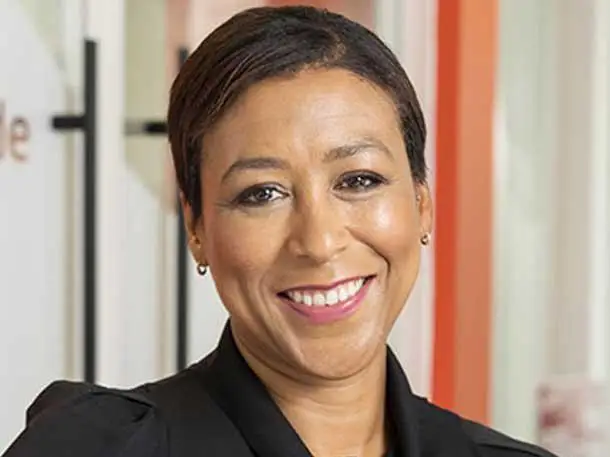International Women’s Day: 5 CEOs On Tech Investments Their Companies Are Making In 2024
Just in time for International Women’s Day, CRN is highlighting leaders from female-led tech companies on the question of where their companies are placing their investment dollars in 2024.

Vendors and solution providers alike find themselves facing the same trends that are changing the technology landscape for their end customers. No vendor or channel partner organization is immune from forces such as hybrid work, cloud, or artificial intelligence and the mark these trends are making. It’s enough for even the world’s biggest organizations to change up their roadmaps and pay close attention.
AI and generative AI, in particular, have captured the fascination of businesses around the globe as they think about how to implement the technology safely, in a way that will generate positive outcomes, such as greater productivity and the offloading of more mundane, daily tasks. That’s why it’s no wonder that AI is on the minds of tech leaders, too. In some cases, vendors and partners have just begun getting their heads around AI and are creating roadmaps. In other cases, for companies further down the path, it’s about responsibly building AI into their systems and processes to benefit their internal employees, as well as their clients.
As part of CRN’s annual CEO Outlook, we asked the highest-ranking executives: What are the key technology investments you plan to make in 2024? It’s no big surprise that AI and evaluating the technology was top of mind. Also important was cloud and cybersecurity.
Here are what the leaders of five female-led companies had to say on where their companies are placing their investment dollars this year.

Lori Williams, CEO, Caylent
In 2024, we’ll be making significant investments in our internal data strategy by spending time integrating our systems to ensure we have a single source of truth for our processes and data. Integrated data will set us up for success as we work through our Internal AI roadmap; starting with the automation of repeatable processes and content generation as well as enhancing our internal Gen AI bot which has already driven efficiencies in our [go to market] GTM processes.

Pamela Maynard, CEO, Avanade
According to our research, nearly all (94 percent) of organizations are increasing their digital investments due to generative AI. To meet their organization’s ambitious AI timelines, IT employees are prioritizing their investments in data and analytics platforms. We are doing the same, as we look to disrupt how we work through AI, I expect a greater proportion of our spend to be on AI related projects going forward. Our IT Investment portfolio has gone from less than 5 percent of the work aligned with AI enablement (mostly in machine learning work, to augment traditional reporting insights) to almost 70 percent of our portfolio having AI or generative AI as a critical architectural component assumed in the solution plan. For the other 30 percent, we are asking if the effort should either be re-evaluated or put on hold, until we better understand if AI should be a critical component.

Poppy Gustafsson, CEO, Darktrace
Cloud, operational technology (OT), and email continue to be integral components of the digital estate and core areas of focus for businesses. However, protecting these areas present unique challenges that require innovative new approaches. These will continue to be core areas of focus for our people and technology investments throughout 2024 to help solve new and emerging challenges for customers. Darktrace began in 2013 as an AI Research Centre, and our R&D centres are foundational to our continued technology innovation. Cross-disciplinary teams with skills ranging from mathematics to linguistics examine how AI can be applied to real-world problems, find new paths forward and augment human capabilities. Over the years, our R&D teams have expanded the areas of the digital world that our Self-Learning AI can learn from and protect -- releasing cutting edge innovations in cloud security, OT, email and more -- and we’ve developed new algorithms and applied them to the real-world cyber challenges facing our customer base. We will continue to invest in and enable our R&D teams to navigate between the technology that the market demands and where their curiosity takes them.

Nayaki Nayyar, CEO, Securonix
We are looking at developing highly specific threat content that is generated, curated and disseminated in real-time based on a customer’s technology environment and applicable threat landscape. This is an idea similar to precision vaccines, which are designed based on the specific DNA characteristics of the recipient. We will also continue to invest in AI and ML, as well as technologies that help companies get value out of generative AI faster. For example, we will incorporate chatbots into the analyst workflow to make threat hunting faster and more cost-effective. This work will be completed within a protected AI environment that ensures the data inputs do not leave the confines of the customer’s instance, and end users won’t have to send out information to 3rd party providers to receive a response from the AI model.

Sam King, CEO, Veracode
The way code is developed has changed materially in the past year. AI-generated code gives speed to development teams. Speed continues to be a trade-off for risk, but it’s never been more important to code securely -- from the start. To that end, Veracode plans to continue to invest in our market-leading automated remediation powered by AI. We will make it easier than ever for organizations to drive down security debt and better manage the overall risk of their applications by enabling all developers to fix security vulnerabilities in the tools they love. We plan to double down on developer experience, meeting the developers where they are to help them find and automatically fix any material security vulnerabilities before they hit their build environments. Security teams will have better visibility and less risk regardless of environment, language or cloud. We will continue to invest in our platform by feeding insights for continuous visibility of risks in the software, containers, microservices and infrastructure. Security teams will have a deeper, real-time view into their application risk.